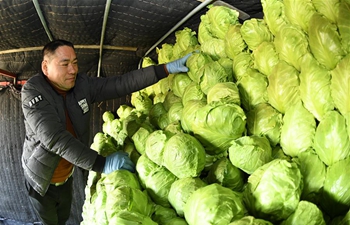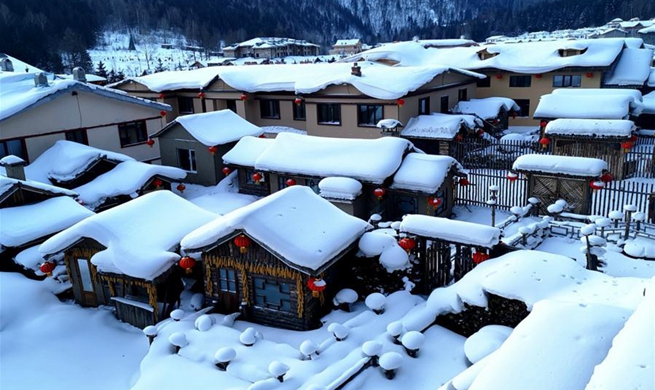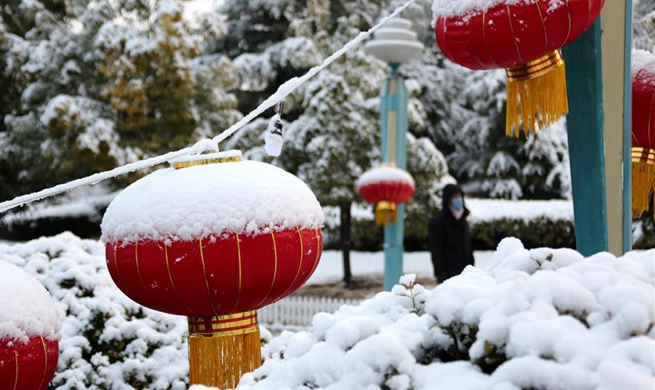BEIJING, Jan. 31 (Xinhua) -- China's Chang'e-4 probe, having made the first-ever soft landing on moon's far side, found that the temperature of the lunar surface dropped to as low as minus 190 degrees centigrade, colder than expected.
This is the first time Chinese scientists have received first-hand data about the temperatures on the surface of the far side of the moon during the lunar night.
The rover and the lander of the Chang'e-4 probe have been awakened by sunlight after a long "sleep" during their first extremely cold night on the moon, the China National Space Administration announced on Thursday.
As a result of the tidal locking effect, the moon's revolution cycle is the same as its rotation cycle, and the same side of the moon always faces Earth.
"According to the measurements of Chang'e-4, the temperature of the shallow layer of the lunar soil on the far side of the moon is lower than the data obtained by the U.S. Apollo mission on the near side of the moon," said Zhang He, executive director of the Chang'e-4 probe project, from the China Academy of Space Technology.
"That's probably due to the difference in lunar soil composition between the two sides of the moon. We still need more careful analysis," Zhang said.
A lunar day equals 14 days on Earth, and a lunar night is the same length. The Chang'e-4 probe switched to dormant mode during the lunar night due to the lack of solar power.
Temperatures vary enormously between day and night on the moon. Previously, Chinese scientists had no data on exactly how cold it could be.
The rover and the lander carried the radioisotope heat source, which helped keep the probe warm during the lunar night.
The lander was also equipped with an isotope thermoelectric cell and dozens of temperature data collectors to measure the temperatures on the surface of the moon during the lunar night.

















